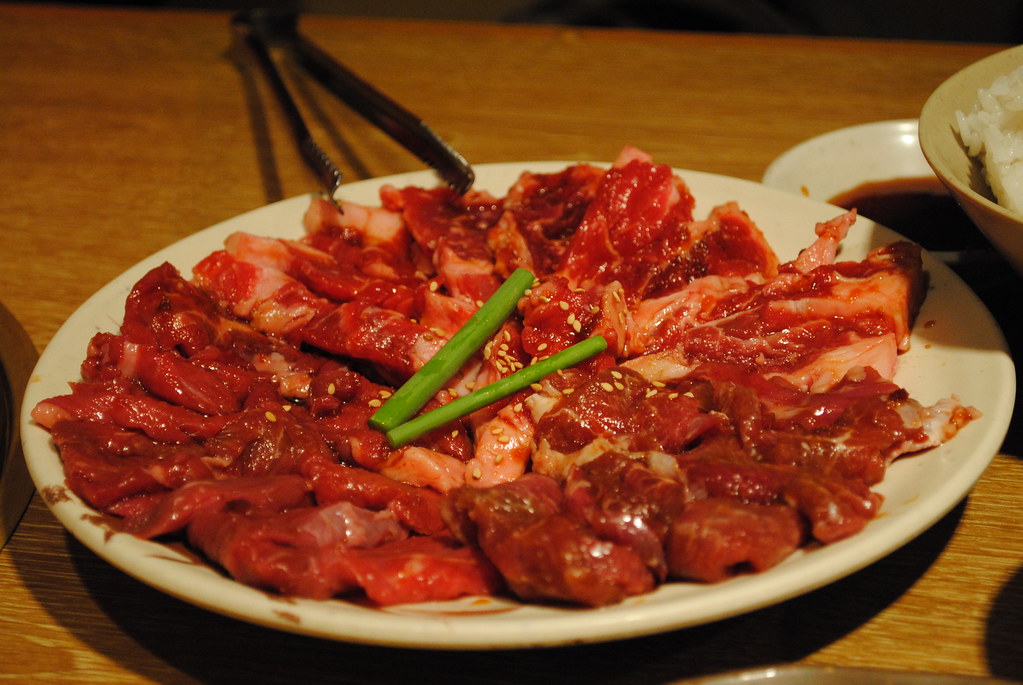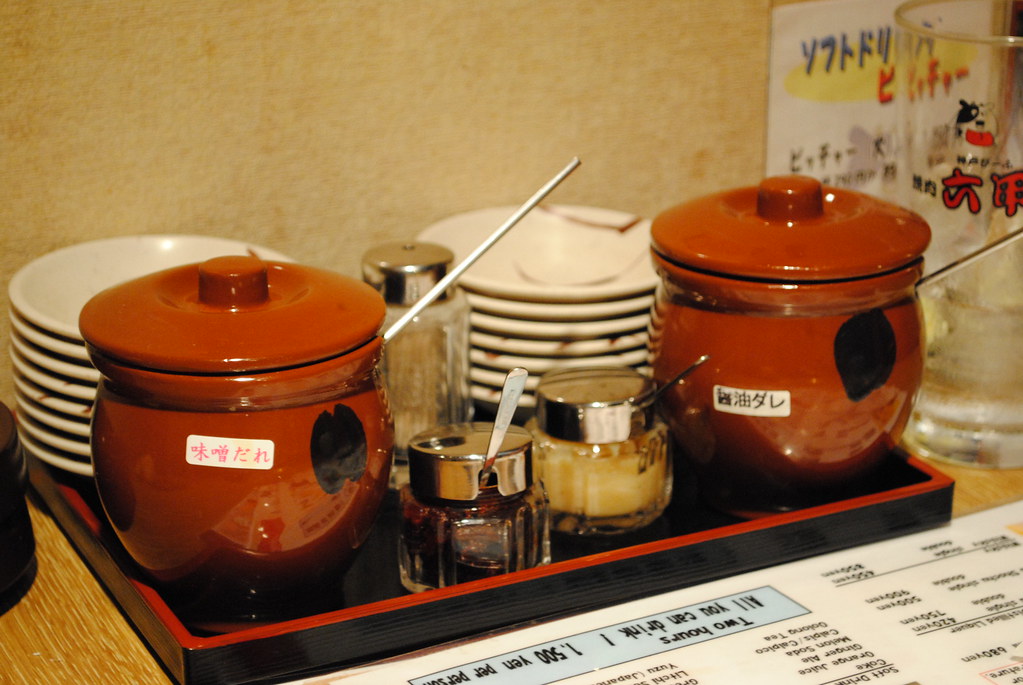Hot food would have made me sweat just to thinking about it a couple of months ago, but we're clearly past the tipping point of 秋 (あき - aki - Autumn) and are crossing into cloudy, wintery days. Like 焼き鳥 (やきとり - yakitori - grilled chicken skewers), 焼肉 is based around the roaring heat of open griddles and scalding hot food, which are both starting to sound very tempting as the mercury drops. So what is 焼肉, where is it from and where is it going? On your plate, if you're quick enough - grab yourself a pair of tongs and try not to burn yourself.
焼肉 literally means "grilled meat" which sums it up pretty succinctly - thinly sliced pieces of meat and other ingredients flame-grilled on a metal grid; it's essentially an import from Korea that has been adapted to suit local tastes. Originally a charcoal brazier was placed on top of each table to cook the meat, but most modern restaurants have a griddle sunk into the table itself that's adjusted with a gas knob. A huge extraction fan or hood usually sits above each table to heave away the heat and smoke as you cook, which makes things much more comfortable for diners than they would have been originally. It also stops you coming out smelling like 焼肉!
The meat is ordered by the plate, each coming out with tongs to help cook it to perfection. Typically each plate is priced individually, but the number of restaurants offering a flat-rate 食べ放題 (たべほうだい - tabehoudai - all you can eat) option seems to have jumped. Some cuts of meat are very fatty, which seems to be the local preference, but by the time the flames have had a good go at them, most of it will have melted off. Two of the more common cuts are カルビ (karubi, from the Korean "galbi" - short rib), ロース (roosu, from the English "roast" - loin/chuck). You can also get chicken, pork and several offal-like ingredients that are misleadingly known as ホルモン焼き (ほるもんやき - horumon yaki); the "ホルモン" refers to bits and pieces that have been discarded, rather than "hormone" as you would expect. There's definitely something for every taste here, as long as every taste is meat. Meat other than lamb or mutton, mind you; that's the exclusive territory of Mongolian barbeque. This is somewhat amusingly named "ジンギスカン" (jingisukan - Genghis Khan) in Japan - it's a very similar offshoot where the meat is cooked on a helmet-shaped skillet rather than a grid.
Meat isn't the only thing available for you to throw on the 焼肉 grill though - plates of vegetables are available, usually featuring 椎茸 (しいたけ - shiitake mushrooms), オニオン (onion), なす (nasu - eggplant) and かぼちゃ (kabocha - pumpkin). If it's thinly sliced and flammable, it belongs on the grill. I've even seen whole にんにく (ninniku - garlic) as an option, which is actually much nicer than it sounds. True to its Korean roots, キムチ (kimuchi - spicy pickled cabbage) is also available as a side dish along with salads and bowls of rice; some restaurants are branching out and offering things like potato salad and even カレー (karee - curry) to go with your meal.
While you wait for the meat to cook, you can help yourself to seasonings - in this case, minced にんにく and ラー油 (らあゆ - raayu - chilli oil). The pots contain 味噌 (みそ - miso) and 醤油 (しょうゆ - shouyu - soy sauce) タレ (tare - sauce), which is basically a mixture of these ingredients with 砂糖 (さとう - satou - sugar) and みりん (mirin). The meat is usually marinated already, but the タレ goes particularly well with the vegetables and helps to cool them off slightly before you eat them. Of course, you may enjoy the delicious chargrilled taste of everything by itself - it's up to you. In any case, if you're dining in a group you'd best pluck everything you want as quickly as possible - it tends to disappear quickly.
Probably the nicest thing about 焼肉 is that you are completely in control of your dining destiny - you can choose the meat you want, cook it as much or as little as you like and tailor the flavour to your liking; you can order enough to stuff yourself or have a nice light meal. お好み焼き (おこのみやき - okonomiyaki) may literally be "grilled things you like", but 焼肉 gets pretty close as a concept. The first time you try it, you might start to wonder why Japan has such a reputation for its fish when there's so much perfectly good meat around.






No comments:
Post a Comment
If you have any questions or additions, I would love to hear from you. I may not know the answer, but I'll do my best to find out in any case! You can post anonymously if you like, but abusive/unintelligible/inappropriate comments will not be published.